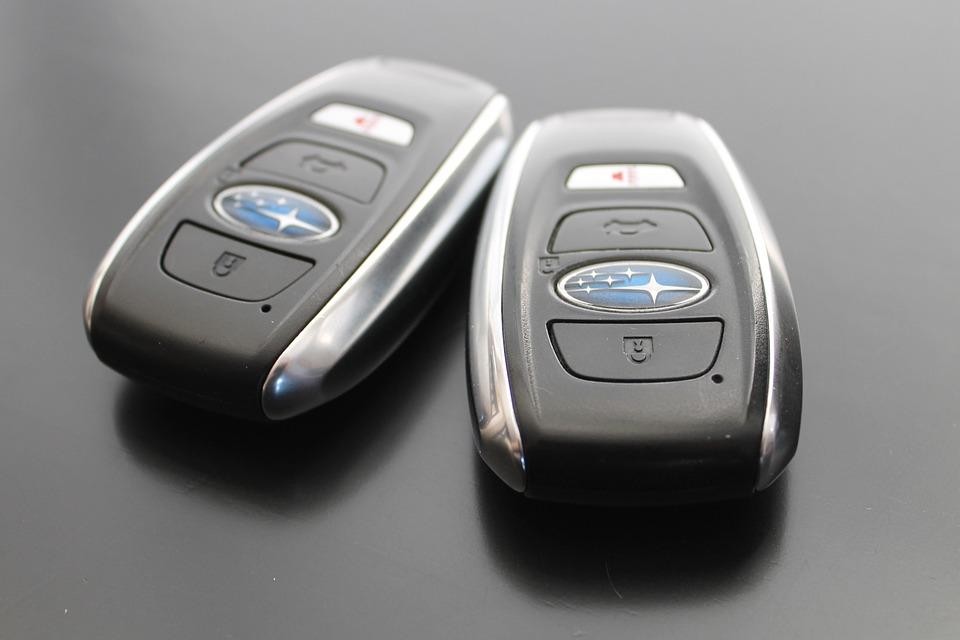Key fobs have become an indispensable part of modern vehicles, offering convenience and enhanced security. These small, handheld devices allow you to lock, unlock, and even start your car remotely. But what happens if you drive off without realizing your key fob is not with you? A common question arises: can you drive a car without a key fob? Let’s delve into this and explore the capabilities and limitations of keyless driving.
Understanding Keyless Driving and Key Fobs
Modern cars equipped with keyless entry and start systems utilize sophisticated technology to detect the presence of the key fob. These systems rely on radio-frequency identification (RFID) or similar wireless communication to authorize vehicle operation. When your key fob is within a certain range of your car, typically inside the cabin, it communicates with the vehicle’s computer, enabling you to start the engine with just the push of a button.
 DRIVE WITHOUT KEY FOB
DRIVE WITHOUT KEY FOB
So, Can You Drive Off Without the Fob?
The short answer is yes, in most cases, you can drive your car even if the key fob is not inside the vehicle after you have started the engine. Once the engine is running, the car doesn’t continuously check for the fob’s presence for basic operation. Think of it like this: the key fob is primarily needed for the initial authorization to start the car.
However, this doesn’t mean you can drive indefinitely without the key fob. Here’s what you need to consider:
- Once You Turn Off the Engine, You May Be Stranded: The most significant limitation is that if you turn off your engine without the key fob present, you will likely not be able to restart it. The car’s security system will prevent ignition without the authorized signal from the key fob. This is a crucial point to remember. You could drive for miles without the fob, but as soon as you stop and switch off, you’re stuck until you retrieve your key fob.
- Warnings and Alerts: Some advanced vehicles are equipped with systems that will alert you if the key fob is not detected inside the car while driving. You might hear a series of beeps or see a warning message on your dashboard. These alerts are designed to remind you that the key fob is missing before you reach your destination and potentially turn off the engine. Pay attention to these warnings!
- Proximity and Range: The operational range of a key fob varies depending on the car model and key fob design. While some fobs might work from a considerable distance (30-50 feet in open space), the reliable operational range for starting and driving is typically much closer, usually within the car’s cabin.
- Model-Specific Behavior: It’s important to consult your car’s owner manual. The exact behavior when driving without a key fob can vary between different makes and models. Some vehicles might have additional safety features or different warning systems related to key fob detection.
Key Fob Functionality: How Does It Work?
A key fob is essentially a sophisticated radio transmitter. Inside, it contains a small circuit board, a battery, and a unique identification code. When you press a button on the fob, it sends a coded radio signal to your car. The car’s receiver recognizes this signal if the code matches, and then executes the command – whether it’s unlocking the doors, starting the engine, or activating the alarm.
For security reasons, key fobs and car systems use rolling codes or encrypted communication to prevent unauthorized access. This means the signal changes each time, making it difficult for thieves to intercept and replicate the signal.
Important Tips for Key Fob Usage
To ensure trouble-free operation and longevity of your key fob, consider these tips:
- Battery Life: Key fobs are battery-powered. Low battery power can significantly reduce the range and reliability of the fob. Replace the battery promptly when you notice reduced range or warning indicators on your car.
- Avoid Interference: Strong electromagnetic fields can interfere with key fob signals. Keep your key fob away from devices that emit strong radio waves, such as radio towers, airports, and some electronic devices.
- Protect from Damage: Treat your key fob with care. Avoid dropping it or exposing it to extreme temperatures, humidity, or strong magnetic fields, as this can damage the internal components.
- Consult the Manual: Always refer to your vehicle’s owner’s manual for specific instructions and recommendations regarding key fob usage and maintenance.
- Professional Repair: If you experience issues with your key fob, seek assistance from a reputable car repair center or dealership specializing in key fob programming and repair.
Final Thoughts
While you can technically drive a car without the key fob present after starting the engine, it’s certainly not advisable to do so intentionally. The risk of being stranded if you turn off the engine far outweighs any perceived convenience. Always ensure you have your key fob with you when driving to avoid potential headaches and ensure seamless operation of your vehicle. Understanding how your key fob works and its limitations will help you use it effectively and responsibly.